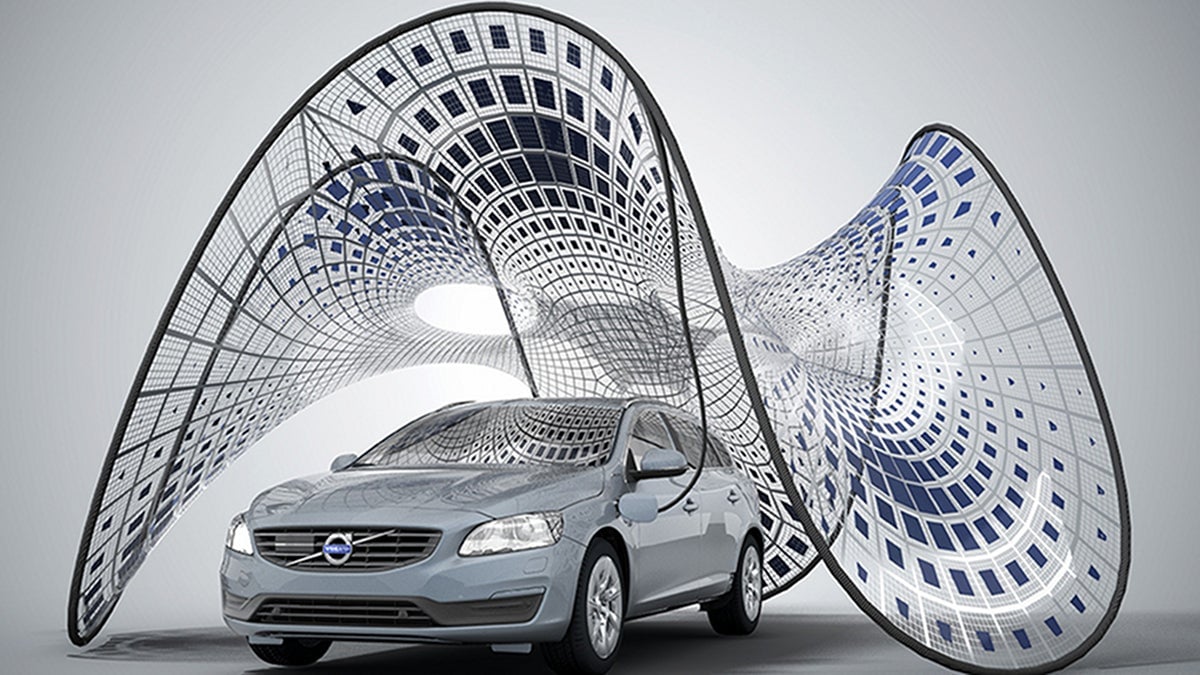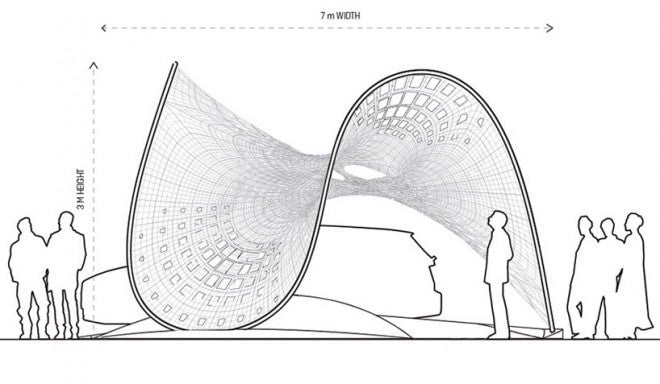Volvo’s beautiful new solar charger may fit in your trunk, but you can’t have it
Concept art for Volvo’s new solar charger accessory, a highly aesthetic set of parabolic panels that can fold into the new hybrid’s trunk after use, has been doing the rounds this week. It turns out the device should be ready by September, but you’re not going to see it in anyone’s driveway for a long time—if ever.


Concept art for Volvo’s new solar charger accessory, a highly aesthetic set of parabolic panels that can fold into the new hybrid’s trunk after use, has been doing the rounds this week. It turns out the device should be ready by September, but you’re not going to see it in anyone’s driveway for a long time—if ever.
The “Pure Tension” concept, created by L.A.-based firm Synthesis Design + Architecture, consists of a carbon fiber frame, mesh surface, and an array of artfully arranged solar panels. It’s indisputably beautiful, even on top of a Volvo, and its portability (designers say it fits into the same size bag that a tent would) is a major draw. After all, one of the biggest downsides to using an electric vehicle is the current lack of charging stations, so having a way to harness UV light anywhere you drive is a plus. The device can reportedly charge the car (for a trip of about 100 miles) in 12 hours.
But it’s not for you.

Volvo commissioned the design to serve as a high-tech pavilion for the V60 plug-in hybrid’s grand tour of Europe this fall. The hope is that the V60 will look fantastic under Pure Tension while simultaneously being charged for the next leg of the journey. It looks impressive because it’s built primarily to impress—the fact that it can charge the car is, well, secondary.
Synthesis designer Alvin Huang told Wired that even the very basics of the design are geared around marketing. “The pavilion sits on three points,” he said, “Acknowledging the three modes of the car—hybrid, power, and pure electric.” In any case, the pavilion isn’t intended for the consumer market, at least not in its current form. “There are no current plans to make the structures available to the consumer market,” Huang told Wired. “But we are in discussion with Volvo about the potential for further development.”
The device isn’t practical for consumer use for several reasons: For starters, the budget for the first version is €60,000 ($79,128). It’s also not going to be a very practical charger. Since it’s designed to use anywhere, it’s nearly impossible to give each solar panel optimal sun exposure. When panels are placed on a house or in a field, engineers can make sure they’re facing the best direction based on their geographic location, ensuring that the panels will be exposed to the sun for as much of the day as possible. Making the device portable (not to mention super curvy) makes that process more complicated. Also, the size is unwieldy. Since it will take up about three parking spaces, it’s not really designed for whipping out at the office or a hotel lot.
However, if the charger performs well on Volvo’s media tour, the company might just be inspired to introduce another model that puts practicality over pizzazz.